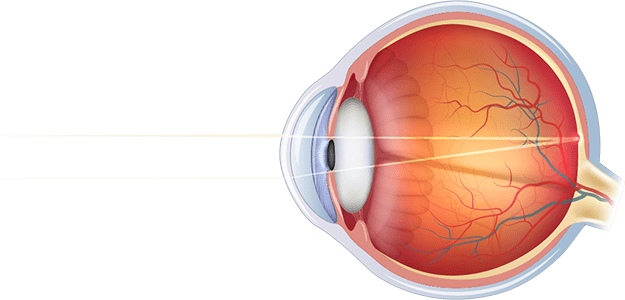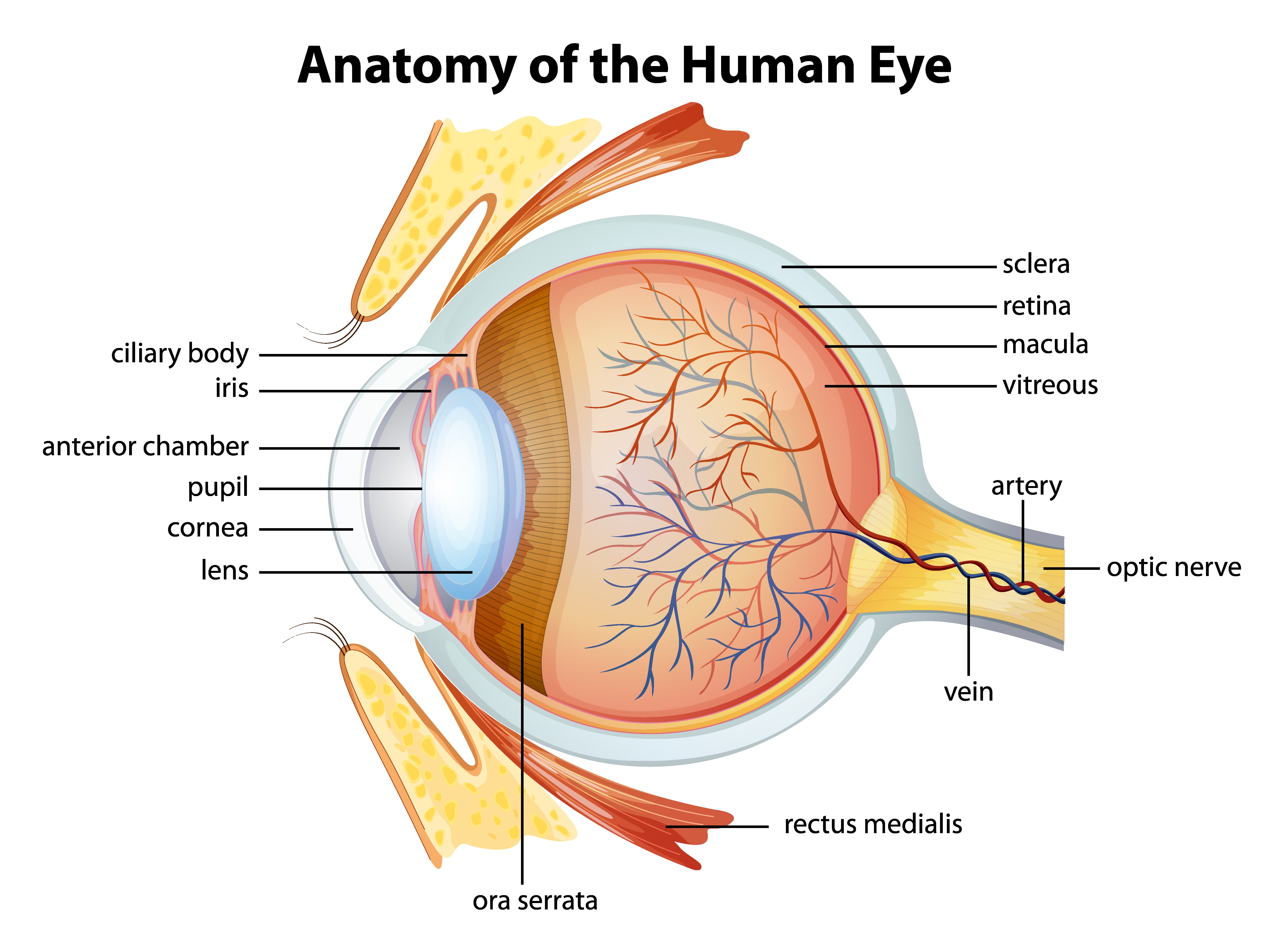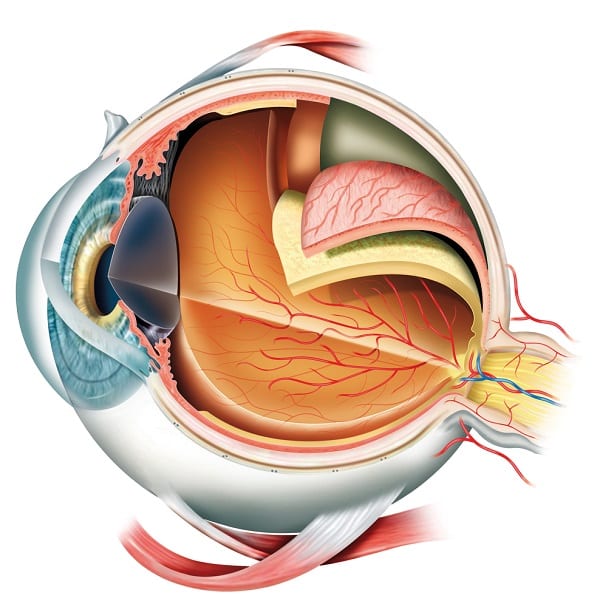Peek A Boo
Let’s See How Vision Works!
June 19th, 2019
by Marco Giuliani

How do you know you’re seeing what you think you’re seeing? How vision works?
Take a break from whatever you were doing (you’re procrastinating, aren’t you?) and take a look around you. What do you see? What do you think you see with? What’s the process behind it? We’re here to answer that question and then some. How vision works and what you should know about your brain circuits involved in eyesight – now, that’s a challenge!
How Vision Works?
Usually, the entire premise that we use our eyes and eyes alone to see is wrong. Your eyes aren’t the ones doing all that seeing business – it’s mostly your brain.
- Whenever you’re looking at something, it’s your brain that’s recognizing those objects after receiving feedback from your eyes.
Think about the eyes as a medium. They’re the Mars Rover in this equation, and the brain is NASA HQ. We need our eyes to perceive our surroundings and collect information that is then processed in the brain.
Let’s start with the simple part of the process. Understanding sight (and the other senses, for that matter) comes down to knowing the anatomy of the organ that does most of the busy work. In this case, the eye.

The Anatomy of the Eye Explained
The eyeball itself is a sphere measuring about 24 mm in diameter. The eye is suspended in the bony socket by a series of muscles, which control its movements, while a thick, partially cushioned layer of fatty tissues ensures that the eye doesn’t get hurt while in motion.

Anatomy of the Human Eye: The Layers
Cut down to its basics, the eye is made out of three layers, namely tunica fibrosa, tunica vasculosa, and the tunica interna. Here’s how they work:
Tunica Fibrosa
Tunica fibrosa is the outermost layer of the eye, which includes the sclera and the cornea.
- The sclera, composed out of dense tissues with rich supplies of blood vessels and nerves, ensures that the external muscles of the eye are properly attached.
- The cornea is responsible for allowing the light to enter the eye.
Tunica Vasculosa
The tunica vasculosa is the middle vascular layer of the eye. This is where you’ll find the ciliary body and the iris.
- The first secretes a fluid called aqueous humor, which supports the lens and the iris.
- The latter is the muscle that controls the pupil’s diameters. Its two layers are responsible for blocking stray light from reaching the retina and setting the eye’s color.
Tunica Interna
Tunica interna is the innermost layer of the eye. It’s composed of the retina, and the optic nerve.
- The retina is the innermost of three tissue layers – when light hits the retina, it’s converted into an electric signal that is transmitted to the brain through the optic nerve – which consists of over one million nerve fibers.
- Think of the optic nerve as the connective link between the eye and the brain.
Anatomy of the Human Eye: The optical Components
With that said and done, it’s time to move on to the optical components of the eye. They admit, bend, and focus light onto the cells of the retina to form an image. They are the following:
- Cornea. The major refractive element of the eye.
- The aqueous humor (scroll above)
- The lens. Its elastic structure makes focusing on near objects possible.
- Vitreous body. It secretes a fluid that protects the eye from motion-related damages.
How Vision Works: The Mechanism of Sight
Now that we’re done with the structural part of the eye, it’s time to explain the process behind sight.
We’ll start with the iris.
This little muscle controls the amount of light that enters the eye through its two sets of smooth muscles.
The light, in turn, enters the pupil via the iris. When the eyes are hit by bright lights, one of the two networks of muscles contracts, and the iris becomes smaller.
On the opposite side of the spectrum, when the light is dim, the size of the pupil increases.

The images we see are actually mere reflections of the objects that we look at.
- Light enters the eye via the cornea, which acts as a sort of makeshift window at the front of the eye.
- Due to the fact that the eye is curved, the light is bent, resulting in an upside down image on the retina (you can somewhat experience this by trying to look through a telescope with inverted image).
How Does Color Vision Work?
Next on our how vision works guide we have color vision. Do we actually see ALL the colors out there? Let’s find out!
Surprisingly, the eye is capable of detecting only three different wavelengths of light, which correspond with three colors – red, blue and green.
- It’s the millions of combinations between these three colors that create the different shades that we take for granted (or learn about from Pantone).
Each of our eyes has, roughly, between 6 and 7 million cone cells, each containing one of three color-sensitive proteins called opsins.
When the light hits the opsins, their shapes change, triggering domino-effect of neural and chemical effects that sends feedback to the brain.
Half of those cones respond to red light, a third to green light, and a measly two percent to blue light.
Myths About Eyes and Sight
Here’s the thing: nobody is exempt from taking facts for granted without researching them properly as long as they sound cool or unique.
However, that doesn’t make them less… well, untrue. Similar to psychology, bodybuilding, and health, there are many myths that have become so ingrained in the public consciousness that most people take them for granted.
Here’s a rundown of the most common myths about eyes and sight:

1. Reading in dim light doesn’t damage your sight, but it will cause fatigue. So your mom nagging you about reading under the blanket after bedtime was probably due to you being too much of a nerd.
2. Prescription glasses or lenses hurt/fix your eyesight. This couldn’t be farther from the truth – they don’t decrease or increase your eyesight, but they will make your vision clearer and prevent eye strain.
3. Despite what your mom says, sitting too close to the TV will not hurt your eyes – but it does cause eye strain and headaches. Same goes for computers, as using one can cause eye fatigue, but not astigmatism, farsightedness or nearsightedness.

4. Contrary to popular belief, eye exercises won’t prevent or fix vision problems.
Eyesight issues are caused by other factors such as the shape of the eyeball and the health of the tissue.
5. Poor eyesight and vision loss is not genetic. While genetics play a small role, there’s no guarantee that you won’t get glaucoma or cataracts thanks to your family medical history.

6. Are carrots good for you? Do carrots improve vision? Your mom (and pop culture) probably told you a million times to eat more carrots to improve your eyesight. Well, if you payed attention above, carrots and eyesight make half a truth and half a lie. Let’s see what science says.
- Orange carrots contain plenty of beta carotene, an antioxidant that turns into vitamin A inside your body. Vitamin A is good for vision and carrots provide you with such small amounts.
- However, for optimal health, you do not have to turn into Bugs Bunny. Other foods rich in vitamin A are liver, milk, cheese, egg yolk, and more.
- Eat vegetables and fruits to stay in tip-top shape! Carrots make a great addition to your healthy lifestyle, but they won’t work miracles on your eyes (in case that was what you expected).
7. What is the deal with the people that are color blind? Color blindness – known as color vision deficiency – describes the inability of some people to see color or perceive differences in colors.
There are 3 major types of color blindness:
- Red-green color blindness (the most common form);
- Blue-yellow color blindness;
- Total color blindness (achromatopsia).
Color blindness has no cure so far, being an inherited condition, but today’s technology is able to help people manage better in their everyday life.

8. Is there such a thing as masturbation blindness?
“Romancing” yourself too much does not lead to blindness. And this is everything we will comment upon the subject.
9. Why is everybody telling you to avoid looking directly into the sun, especially when you do not wear UV sunglasses? Well, because by doing so, you may get not only headaches or a temporary distortion of vision, but also retina damages.
Conclusion
Now that we discussed the main aspects of how vision works in general, tell us other fun facts or science bits about eyesight that you know and want to share with us! See you later (hopefully, in the comments section below)!
Want more science now?
Check out our news page where we post interesting studies and discussions (sometimes mocking them mercilessly) for more.
